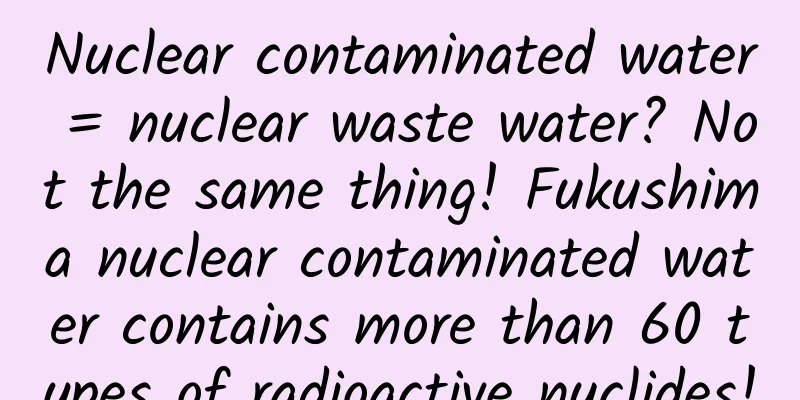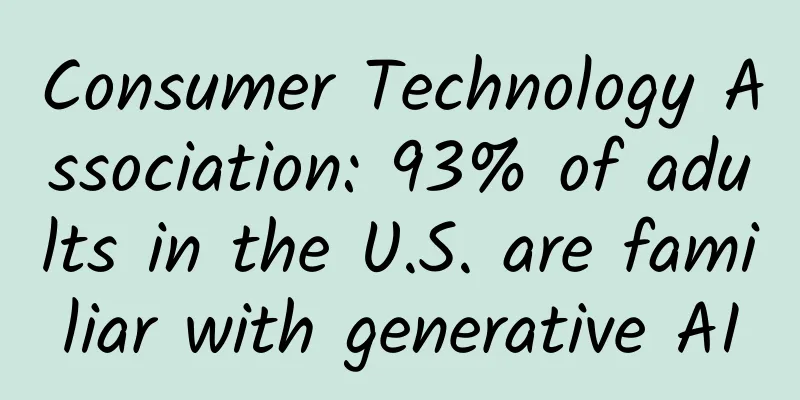Nuclear contaminated water = nuclear waste water? Not the same thing! Fukushima nuclear contaminated water contains more than 60 types of radioactive nuclides!

|
According to NHK, the Japan Broadcasting Association, Tokyo Electric Power Company officially started the Fukushima nuclear contaminated water operation at around 1:00 p.m. local time on the 24th. Previously, Tokyo Electric Power Company also announced the discharge plan. The first phase of the discharge will last for 17 days, with a total of about 7,800 cubic meters of nuclear contaminated water discharged. It is expected to discharge about 31,200 tons in 2023. According to a message released by Tokyo Electric Power Company of Japan, today's discharge of nuclear contaminated water is estimated to be 200 to 210 tons, and the daily discharge situation will be announced the next day. Screenshot from Japanese media "Nuclear contaminated water" and "nuclear waste water" Not the same thing According to China Daily, nuclear waste water and nuclear contaminated water are fundamentally different. Nuclear wastewater refers to wastewater generated by nuclear power plants in normal daily activities, such as water used to cool key parts of nuclear power plants. This water will not come into contact with radioactive materials in nuclear reactors and can be discharged through pipes after strict treatment. Nuclear contaminated water refers to water that has come into direct contact with radioactive substances in the reactor during an accident and has become highly radioactive due to contamination. This water must be strictly stored and processed through multiple processes and evaluated by experts before it can be discharged into the ocean, otherwise the ecological risks it brings will be immeasurable. Today (August 24), the Ministry of Ecology and Environment (National Nuclear Safety Administration) responded to reporters' questions about Japan's initiation of the discharge of Fukushima nuclear contaminated water into the sea, stating: The Japanese government forcibly initiated the discharge of Fukushima nuclear contaminated water into the sea... The term used was "nuclear contaminated water." ** What impact will the discharge of nuclear contaminated water into the sea bring? ** The multi-nuclide treatment system (ALPS) is the key to the Japanese government and Tokyo Electric Power Company's plan to discharge contaminated water into the sea. The Japanese side insists that the contaminated water treated by ALPS is "treated water" and believes that "treated water" has met the standards and can be discharged. However, this is not the case in reality. ▶ First, there is no effective treatment technology for many radioactive nuclides in nuclear contaminated water. The Fukushima nuclear contaminated water contains more than 60 types of radioactive nuclides, such as tritium, carbon-14, iodine-129, etc. Many of these radioactive nuclides do not have effective treatment technologies, but Japan has been misleading people by saying that "the problem lies only with tritium." An investigation by an international environmental organization found that ALPS cannot remove radioactive tritium and carbon-14, nor can it completely remove other radioactive isotopes such as strontium-90, iodine-129 and cobalt-60. ▶ Second, the radioactive nuclides in nuclear contaminated water affect human health. Japan claims that after dilution with seawater, the tritium concentration in the water will be less than one-fortieth of the Japanese control standard. However, dilution cannot reduce the total radioactive dose of discharged nuclear contaminated water. Gao Zhiguo, president of the China Society of the Law of the Sea and former judge of the International Tribunal for the Law of the Sea, said that after these radionuclides enter the marine environment, tritium may not be the most dangerous. The most harmful to humans and marine life are carbon-14 and iodine-129. The half-life of carbon-14 is more than 5,000 years, and the half-life of iodine-129 is even longer. Carbon-14 will accumulate in the bodies of marine life, that is, fish, and the abundance or concentration of carbon-14 may be 50 times that of tritium. ▶ Third, the impact of nuclear contaminated water involves the entire world. German marine science research institutes pointed out that the coast of Fukushima has the strongest ocean currents in the world. Within 57 days from the date of discharge, radioactive materials will spread to most of the Pacific Ocean. Three years later, the United States and Canada on the other side of the Pacific Ocean will be affected by nuclear pollution, and in ten years it will spread to all oceans around the world. Source: CETV New Media Comprehensive CCTV News Client, People's Daily Client, Media Tea Party WeChat Official Account |
<<: What is the "white frost" on fruits? Mold? Pesticide residue? Or...
>>: How does the blood in the legs and feet overcome gravity and flow to the heart?
Recommend
Baidu TV products launched two consecutive times to enter the market and lock in distribution channels
On August 19, Baidu released "Baidu TV Assis...
A money-making project that passively acquires traffic: You can also earn 200 yuan a day by intercepting traffic and selling information from Douyin comments
It is not difficult to make money. You just need ...
China Passenger Car Association: The total retail market size of narrow passenger cars in March 2025 is about 1.85 million vehicles, a year-on-year increase of 9.1%
According to preliminary estimates by the China P...
What are the functions of the car repair mini program? How to make a WeChat auto repair mini program?
According to statistics, the number of cars in my ...
What are the "Fermi Paradox" and the Great Filter Hypothesis? Does the cosmic civilization filter really exist?
After the "Fermi Paradox" about aliens ...
From Tencent Zhihui to social advertising, how native advertising can help precision marketing
Tencent products, a high-quality performance mark...
Alibaba Cloud: PolarDB database will set new TPC-C global double chart records with 2.055 billion tpmC performance in 2025
Recently, Alibaba Cloud announced that the Alibaba...
Can WeChat’s paid reading function allow content creators to live a good life?
It has been rumored for a long time that WeChat w...
New technologies, new achievements, Juefei Technology won the Golden Globe Award for "Intelligent Connected Innovation" again
Recently, the Gaogong Intelligent Automobile Summ...
Samsung is viewed negatively by analysts: Chinese companies are the reason why it was crushed
As Samsung loses its grip on the smartphone marke...
How to make your product spread wildly?
Generally, marketing will plan a series of activi...
The 2020 Guide to Bargaining for Marketing Ads
There is a famous saying in the marketing world: ...
New trends in video marketing in 2022
For every seller doing overseas marketing, the to...
Morgan Stanley: Research shows that Chinese companies account for 63% of the global humanoid robot industry chain
Morgan Stanley recently released "Humanoid R...
Today is the Winter Solstice | Should we eat dumplings or glutinous rice balls?
In your hometown Should we eat dumplings or gluti...









